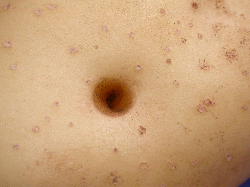
New work at Scottish Agronomy and SCRI is starting to establish the first ever ranking of potato varieties' susceptibility to wireworm feeding damage – information growers need to make varietal choice a far more realistic ICM tactic in the fight against arable wireworm.
With wireworm now a widespread problem throughout arable areas of England and Scotland, Scottish Agronomy's Eric Anderson says growers need a quantified basis for varietal choice, which to date has had to be based on experience and anecdotal evidence.
So far 12 popular varieties covering a range of maturities and market outlets have been ranked. To do this SCRI's Scott Johnson conducted a trial studying wireworms' varietal preferences, the extent of damage caused by them and their weight gain or loss. Fascinatingly this revealed that wireworm put on significant weight by feeding on some varieties whereas they lose significant weight when feeding on others.
From this work varieties have been categorised in their susceptiblity to wireworm feeding damage. Falling in the most susceptible group are two second earlies – Maris Peer and Marfona – and the maincrop variety Rooster.
In the least susceptible group are pre-pack varieties Nadine, Harmony and King Edward and the most widely grown all-rounder, Maris Piper. What is clear is that there is no relationship with varietal susceptibility to slug damage.
Mr Anderson says the relevance of this initial ranking to growers is that it will allow a much better informed selection of varieties. "On the increasing number of high wireworm risk sites, soil treatment with a nematicide can never be expected to completely eliminate damage.
"By choosing less susceptible varieties or switching varieties between fields, according to wireworm pressure, growers can manage the risk of damage. This should be possible without compromising market outlet as every packer has a range of varieties they will accept."
The trial also showed no relationship between the 12 varieties' maturity and susceptibility to wireworm damage. Monitoring for damage during the latter stages of crop development will therefore continue to be as important as ever he says.
"If you know there are wireworm present, even if the soil's been treated, lift as early as possible consistent with a marketable yield being achieved . The longer tubers are left in the soil, the more damage you get. Ever tightening quality demands make a sample with 5% damage unmarketable and grading out completely impractical."
Referring to other trials undertaken by Scottish Agronomy last year he emphasises that soil treatments have been shown to vary hugely in their persistence, which can prove critical in this balancing act between yield, rate of bulking and wireworm damage.
In a trial last year at a very high risk site near Dundee, which only came out of grass two years earlier, a crop of Maris Piper was monitored through August and September - the time when damage to daughter tubers escalates due to the second peak in wireworm feeding activity.
"At the first dig on 8th August damage to tubers in the Mocap treated area was still below 5% whereas the Nemathorin treated area was approaching 40%. By lifting at the end of September Mocap had maintained 90% control compared with just 37% from Nemathorin."
In a second trial on the more susceptible variety Saxon a similar outcome was seen with Mocap reducing damage by 83% at lifting compared with 17% from Nemathorin. He adds that these results are consistent with previous trials where Mocap has consistently come out clearly as the lead product for controlling wireworm and given significantly longer lasting control.
